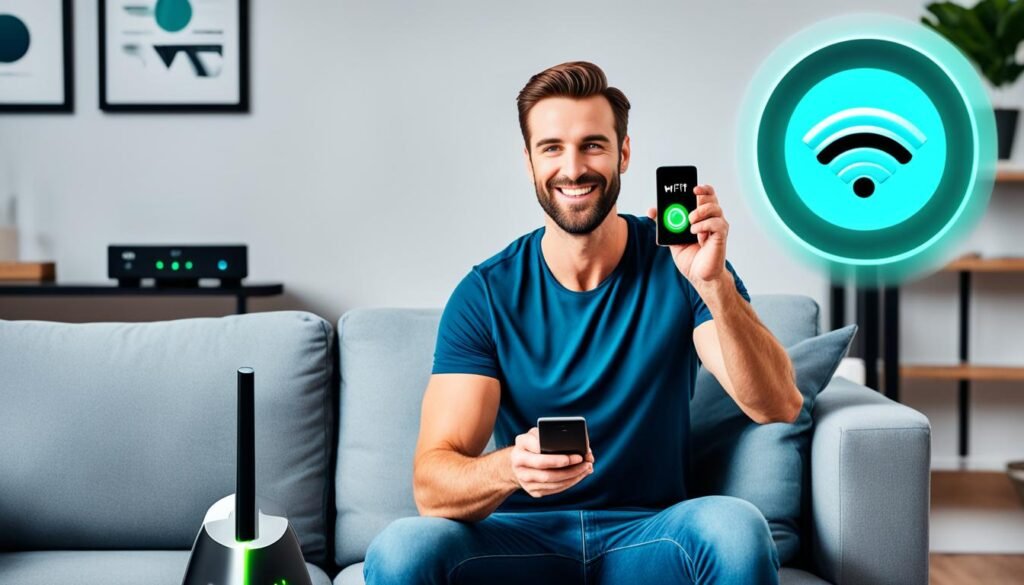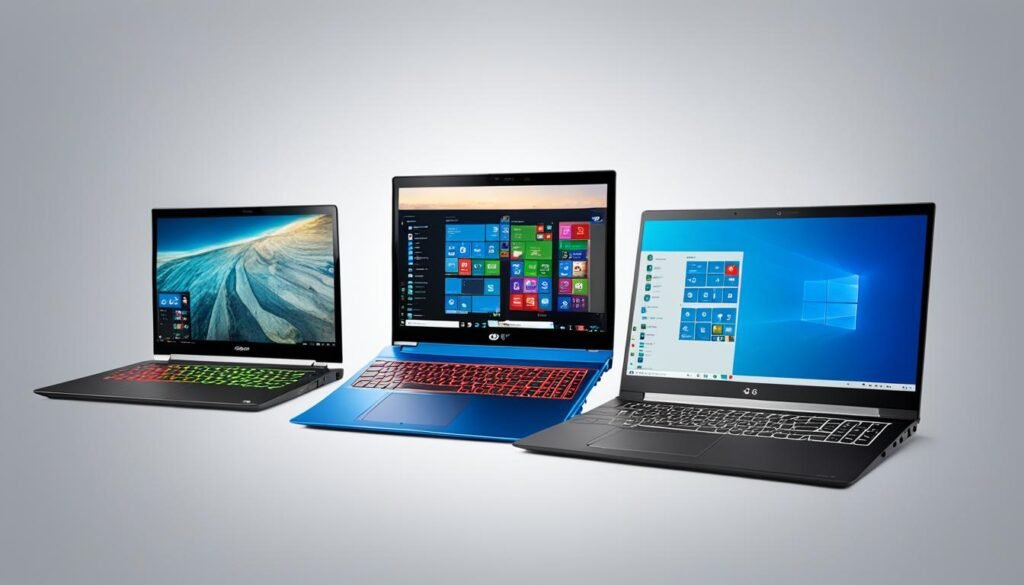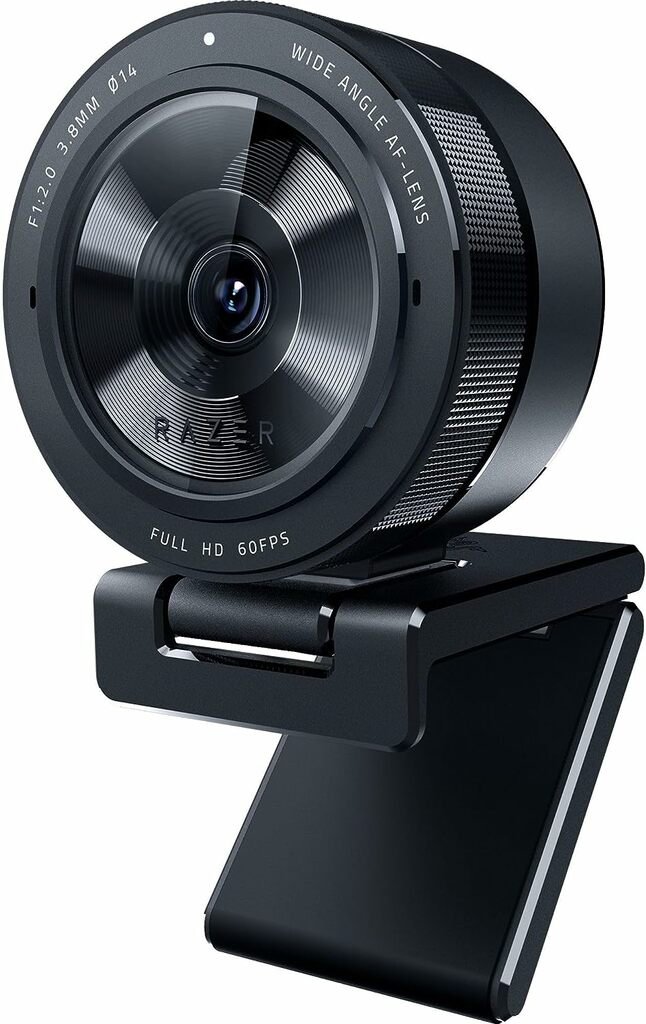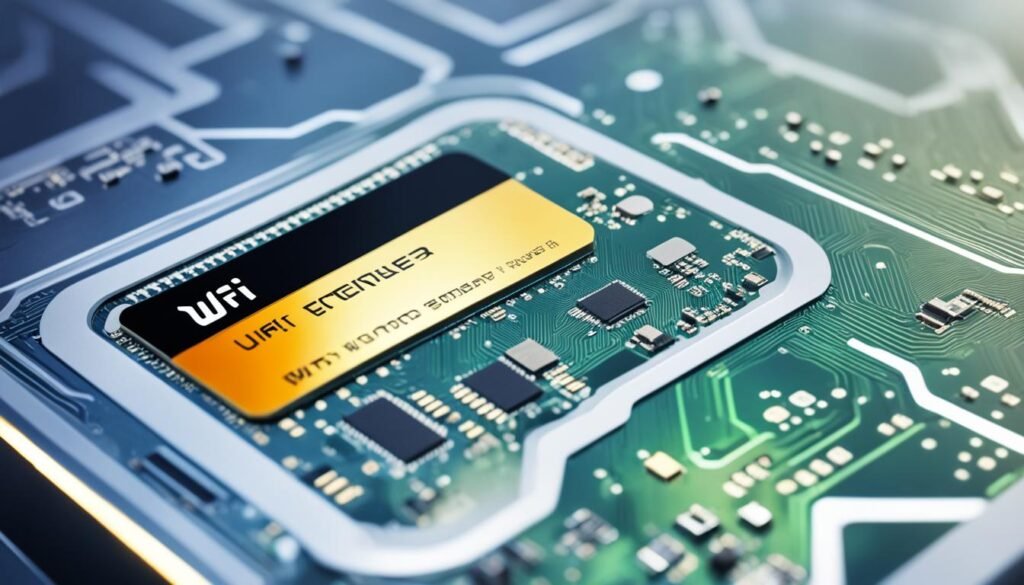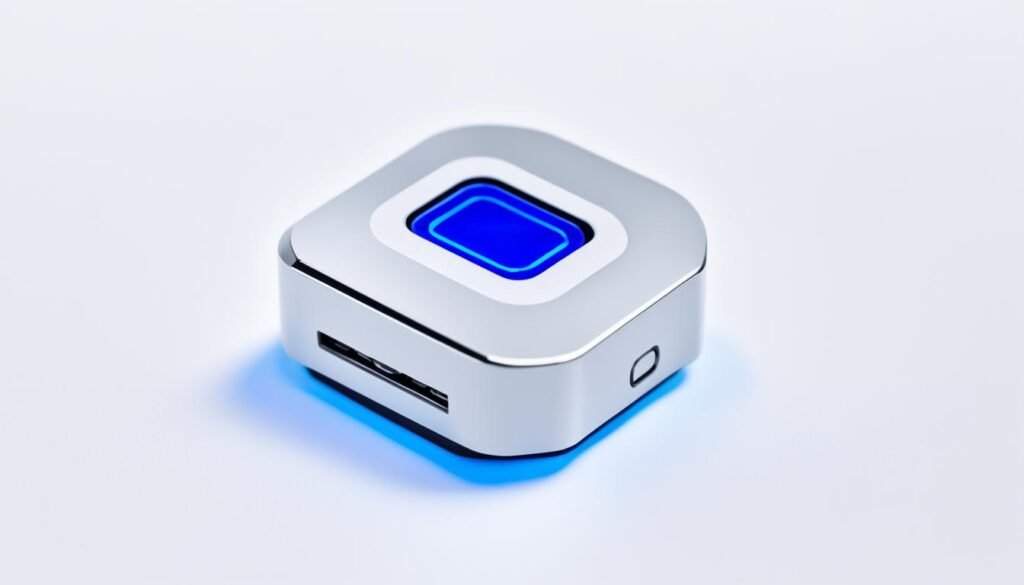Are you tired of running out of battery on your iPhone? Whether traveling, working, or simply on the go, having a reliable portable charger can make all the difference. But with so many options out there, how do you choose the best one for your iPhone?
Regarding portable chargers, there are a few key factors to consider. Capacity, charging speeds, pass-through charging, and even travel restrictions play a role in determining the best charger for your needs.
When choosing a portable charger for your iPhone, it’s essential to consider the capacity and charging speeds. These factors determine how many charges the power bank can provide and how quickly it can recharge your device. Let’s take a closer look:
Capacity
The capacity of a power bank is measured in milliampere-hours (mAh), and the amount of power it can hold is determined. Smaller battery capacities, such as around 5,000mAh, are compact and portable, making them great for on-the-go charging. On the other hand, larger battery capacities of 10,000mAh or more can provide multiple charges, which is ideal for those who need extended power.
Charging Speeds
Charging speeds are measured in watts (W) and vary depending on the device and the charging standards. Fast charging has become increasingly popular, especially for iPhones. One of the most common standards for rapid charging is Power Delivery (PD), which allows for quicker charging times. When selecting a power bank, ensure that it supports the appropriate charging speed for your specific device to maximize efficiency.
| Capacity | Charging Speed |
|---|---|
| 5,000mAh or smaller | Standard charging speed |
| 10,000mAh or larger | Fast charging speed (e.g., Power Delivery) |
| 20,000mAh or larger | Extended capacity and fast charging speed |
Choosing a power bank with the appropriate capacity and charging speed ensures you have enough power when needed, whether for a quick boost or multiple daily charges.
Pass-through Charging and Travel Restrictions
When choosing a suitable portable charger for your iPhone, there are a few additional considerations to remember. One feature that you may find helpful is pass-through charging, which allows you to charge both the power bank and another device simultaneously.
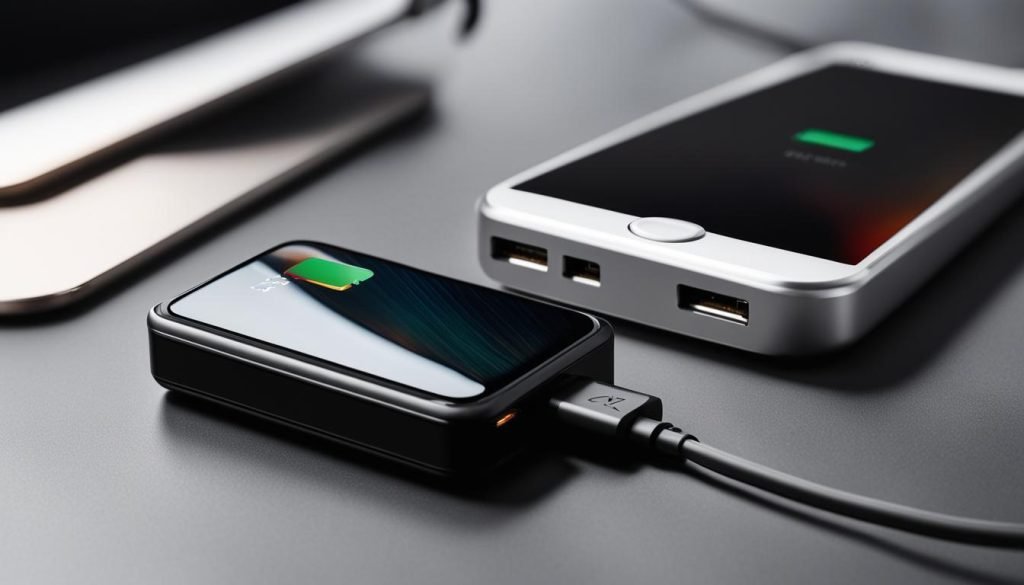
While not all power banks support pass-through charging, it is convenient to frequently charge multiple devices simultaneously. However, it’s important to note that some manufacturers advise against using pass-through charging due to potential overheating issues. Check the instructions and guidelines provided by the manufacturer before using this feature.
Another crucial consideration, especially if you frequently travel, is to be aware of airline restrictions on power bank capacity. Most airlines allow power banks with a capacity below 27,000 mAh to be carried in your carry-on luggage. However, it’s always a good idea to double-check with the specific airline you’re flying with to ensure compliance with their regulations.
To summarize, pass-through charging can be a handy feature for charging multiple devices simultaneously. However, always follow the manufacturer’s guidelines and recommendations to avoid potential risks. Additionally, be mindful of airlines’ power bank capacity restrictions when traveling to ensure a hassle-free journey.
Best Portable Chargers for iPhone
A reliable portable charger is essential when charging your iPhone on the go. Several excellent choices are available if you need a compact option for everyday use or a high-capacity power bank for extended trips.
1. Apple MagSafe Battery Pack
The Apple MagSafe Battery Pack is a convenient solution for iPhone users with MagSafe support. Please attach it to the back of your phone for wireless charging on the move. Its lightweight and compact design makes it perfect for everyday use.
2. Anker PowerCore Slim 10K PD
The Anker PowerCore Slim 10K PD offers high-end features, including USB Power Delivery for fast charging. Its capacity of 10,000mAh provides plenty of power to get you through the day. Its slim profile makes it easy to carry in your pocket or bag.
3. Anker 321 Power Bank (PowerCore 5K)
The Anker 321 Power Bank is an excellent choice if portability is your top priority. With a capacity of 5,000mAh, it’s compact enough to fit in your pocket. Despite its size, it still offers reliable charging for your iPhone.
4. Anker 737 Power Bank
The Anker 737 Power Bank is a reliable option for those needing to charge power-hungry devices like laptops. It’s high capacity, and multiple output ports can handle even the most demanding charging needs.
5. Mophie Powerstation XXL
If you’re looking for a high-capacity power bank that can recharge your phone multiple times, the Mophie Powerstation XXL is worth considering. With a capacity of 20,000mAh, it can keep your iPhone powered up for days.
6. Otterbox Fast Charger Power Bank
Known for its durability, the Otterbox Fast Charger Power Bank is a rugged option that can withstand the rigors of your daily adventures. It also features fast charging capabilities, ensuring your iPhone gets charged quickly and efficiently.
7. QiSa Solar Charger
For outdoor enthusiasts, the QiSa Solar Charger is a great choice. This solar-powered charger allows you to harness the sun’s power to keep your iPhone charged, even when off the grid.
| Portable Charger | Capacity | Charging Speed | Features |
|---|---|---|---|
| Apple MagSafe Battery Pack | Unknown | Unknown | Wireless charging, MagSafe support |
| Anker PowerCore Slim 10K PD | 10,000mAh | USB Power Delivery | Slim design |
| Anker 321 Power Bank (PowerCore 5K) | 5,000mAh | Unknown | Ultra-portable |
| Anker 737 Power Bank | Unknown | Unknown | Multiple output ports |
| Mophie Powerstation XXL | 20,000mAh | Unknown | High-capacity |
| Otterbox Fast Charger Power Bank | Unknown | Unknown | Durable, fast charging |
| QiSa Solar Charger | Unknown | Unknown | Solar-powered, outdoor use |
What Size Battery Do You Need?
The size of the portable charger’s battery, measured in milliampere-hours (mAh), determines its capacity and charging capabilities. When choosing a portable iPhone charger, assessing your typical needs is vital to ensure you have enough power to keep your devices charged on the go.
Smaller batteries, around 5,000mAh, are compact and portable, making them ideal for travelers or those who prefer a lightweight option. These chargers can charge a phone once, providing a reliable power boost.
For those who often find themselves running low on battery throughout the day, a charger with a capacity of 10,000mAh is recommended. This size can provide two total charges for most flagship smartphones, offering extended usage before recharging the charger itself.
If you require even more power, consider a charger with a capacity of 20,000mAh or higher. These high-capacity batteries can charge a phone four times or two phones twice, making them suitable for longer trips or situations where access to power outlets may be limited. Higher-capacity batteries can even charge laptops, providing a versatile solution for various devices.
When deciding on the size of the portable charger, it’s essential to balance your power needs with portability. While larger-capacity batteries provide more charging cycles, they can be bulkier and heavier. Consider your everyday activities and determine the optimal size that fits your lifestyle.

Remember that portable chargers may have different charging speeds, so matching their capabilities with your device’s charging speed is essential. Some chargers are equipped with fast charging technologies like USB Power Delivery, which can further enhance the charging speed of compatible devices.
To summarize, when choosing a portable iPhone charger, consider the size of the battery in mAh. Smaller batteries, around 5,000mAh, are portable and suitable for single phone charges. A 10,000mAh battery can provide two total charges, while a 20,000mAh battery offers four or two charges for two phones. Assess your charging needs and select a charger that perfectly balances capacity and portability for your on-the-go lifestyle.
What’s the Difference Between Power Input and Output?
When it comes to portable chargers, understanding the difference between power input and output is essential. Power input ports are used to charge the portable charger itself, while power output ports are used to connect charging cables for your devices. Let’s take a closer look at each one:
Power Input Ports
Power input ports, typically micro USB or USB-C, allow you to recharge your portable charger. Connecting a compatible charger or cable to the power input port can replenish your charger’s battery for future use. The appropriate charging cable and power source are essential to ensure an efficient and safe charging experience.
Power Output Ports
Power output ports, typically USB-A ports, interface between your portable charger and your devices, such as iPhones and Android phones. By connecting a charging cable to the power output port of your portable charger, you can transfer power from the charger to your device, charging it in the process. Some portable chargers even come with built-in output cables featuring micro USB, USB-C, or Lightning connectors, making it convenient to charge your devices without carrying additional wires.
Matching your portable charger’s output port to your device’s input port is crucial to ensure compatibility. For example, if your device has a USB-C input port, you’ll need a portable charger with a USB-C output port to charge it efficiently. Mismatching ports may result in slower charging speeds or incompatible connections.
Larger Batteries and Multiple Ports
Some portable chargers, especially those with larger battery capacities, may feature multiple input and output ports. These additional ports allow you to charge multiple devices simultaneously or recharge the portable charger from numerous power sources. This can be particularly useful when you’re traveling or need to charge multiple devices at once.
| Portable Charger | Power Input Ports | Power Output Ports |
|---|---|---|
| Anker PowerCore 10000 PD | USB-C | USB-C, USB-A |
| RavPower Portable Charger 26800mAh PD | Micro USB, USB-C | USB-C, USB-A |
| Aukey Wireless Power Bank 10000mAh | USB-C | USB-C, USB-A, Wireless |
| Belkin Boost Charge Power Bank 10000mAh | USB-C | USB-C, USB-A |
Table example of portable chargers with different power input and output ports.
Understanding the differences between power input and output ports is crucial for selecting a suitable portable charger. Whether you need to charge your devices on the go or replenish the battery of your portable charger, having compatible ports ensures a seamless and efficient charging experience.
What Is Fast Charging?
Fast charging is a feature that allows your devices to charge more quickly by increasing either the voltage or amperage. Two popular fast charging protocols are Quick Charge and USB Power Delivery. Quick Charge increases the voltage to deliver power faster, while USB Power Delivery enables power to flow between compatible devices, allowing for faster charging. It’s essential to check the charging rates supported by your device, as different devices may have other capabilities.
Faster charging speeds can be particularly beneficial when you need to regain power on the go quickly. Whether traveling, working, or simply using your iPhone throughout the day, fast charging can save you time and ensure you always have the needed power.

Quick Charge vs. USB Power Delivery
Let’s look at the two popular fast charging protocols: Quick Charge and USB Power Delivery.
| Quick Charge | USB Power Delivery |
|---|---|
| Increases voltage to deliver power faster | Enables power to flow both ways between compatible devices |
| Supported by various Android devices | Becoming more widely adopted across devices, including iPhones and Androids |
| Requires a Quick Charge-compatible adapter or power bank | Requires a USB Power Delivery-compatible adapter or power bank |
| Offers faster charging speeds on devices that support the protocol | Provides efficient power delivery for faster charging |
Conclusion
When choosing a portable charger for your iPhone, it’s important to consider several factors. First, evaluate the charger’s capacity and how many charges it can provide for your device. Whether you need a compact option for on-the-go charging or a high-capacity power bank for more extended usage, options are available to suit your specific needs.
Charging speed is another crucial aspect to consider. Look for a charger that supports fast charging standards like USB Power Delivery, especially if you need to regain power quickly on the go. Additionally, if you frequently need to charge your iPhone and another device simultaneously, consider a charger with pass-through charging capabilities.
Remember any travel restrictions when choosing a portable charger for your iPhone. Airlines may have limitations on the capacity of power banks allowed in carry-on luggage, so ensure that your chosen charger complies with these regulations.
With a suitable portable charger, you can ensure your iPhone has enough power to keep you connected and productive. Consider the capacity, charging speed, pass-through charging, travel restrictions, and specific charging needs to find the best portable charger and enjoy uninterrupted power wherever you go.
Author
-

Hey there! I'm Andrew Reed, and I live for the thrill of writing reviews. Dive into my world at bestfordaily.com, where I unpack stories behind products and experiences. I'm all about sharing my unique take on things, infusing each review with my youthful enthusiasm and a dash of social flair. Join me on this exciting journey—I promise you won't just read reviews; you'll experience them!
View all posts


